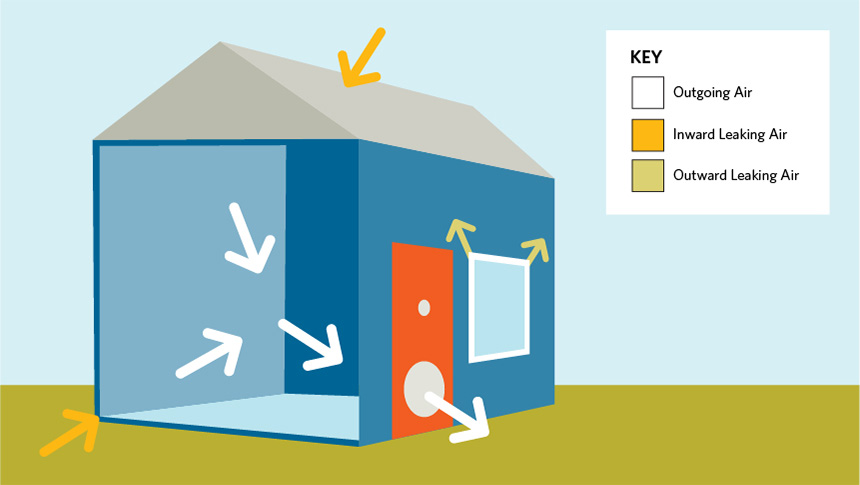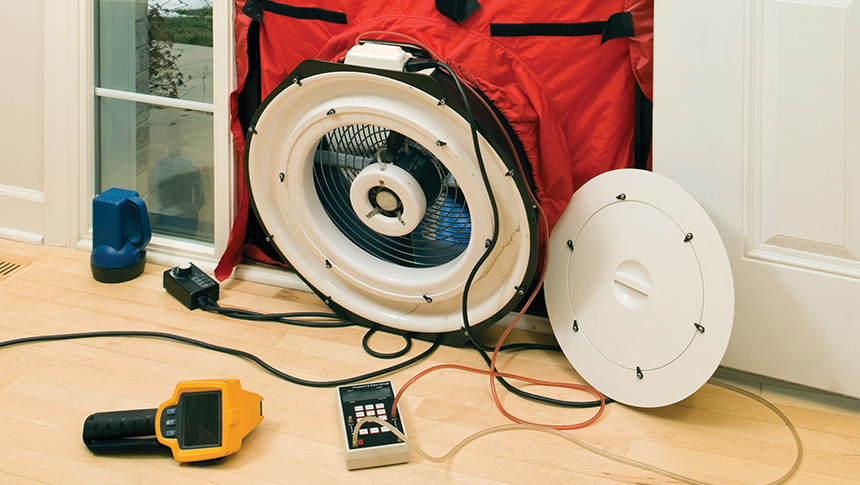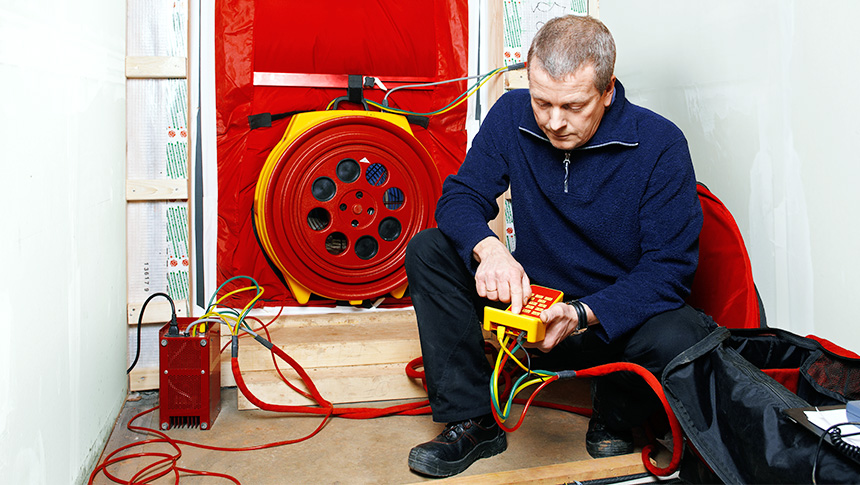Improve comfort and decrease energy loss with a blower door test
No-cost and Low-cost Updated: March 18, 2024How a blower door test locates and eliminates air leaks in your home
How a blower door test locates and eliminates air leaks in your home

Most homes, especially older homes, have some sort of air leakage. While a healthy level of air exchange is important, you want to make sure that the air coming in and out of your home is controlled. Common areas where unwanted or excessive air leakage can occur include gaps around your doors and windows, electrical outlets, attic hatches and fireplace dampers.
According to ENERGY STAR®, air leakage accounts for between 25% and 40% of the energy used for heating and cooling in a typical residence.* That’s a lot of wasted energy. Addressing air leaks not only helps your home save energy, but it also helps make your home healthier and more comfortable by reducing pollutants, allergens and excessive moisture.
Scheduling a blower door test with a trained energy professional can help you identify air leaks and determine the amount of air entering or leaving your home. The test consists of a large fan set in the opening of an exterior door and uses a combination of gauges and hoses to measure the volume of air traveling through gaps and cracks in your home.
There are many benefits of measuring, locating and addressing air leakage in your home:

What is it?
The blower door test equipment consists of a large fan, an adjustable frame with fabric to fit inside the opening of an exterior door, a gauge to measure air pressure and volume of air moving through the fan and hoses to allow the gauge to collect readings from various locations inside and outside of the home. The fan sits within an opening inside the frame and fabric during the test.

How does it work?
A blower door test takes around 1 – 2 hours and is completely safe for plants, pets and kids inside the home. To prepare for the test, close all windows, doors and other components that would typically be closed during a cold winter day, such as fireplace dampers. All indoor doors are left open.
Once the fan is turned on, it begins to pull air out of your home, creating a depressurized interior. Outside air then travels into your home through all the gaps, cracks and leaks along your home’s exterior. Since the fan is dramatically depressurizing the inside of your home, the outside air infiltration is noticeable if you put your hand near the leak. Home energy professionals may also use a fog device to visualize the air movement as they walk around the home while the fan is in operation. In addition to measuring the amount of air leaking from your home, the home energy professional also identifies areas to target with air sealing.
Your home’s air leakage is measured by the cubic feet of air moving through the fan per minute (CFM). The CFM measured is compared to a chart that determines the acceptable level of air leakage for your specific home. This is also known as “air exchanges per hour.” Remember, not all air leakage is bad if it is controlled. It is recommended that the indoor air is fully exchanged with fresh outdoor air approximately once every three hours, perhaps even more often depending on the number of people living in your home. This air flow allows the release of pollutants, odors and moisture generated from inside.
Air leakage and ventilation are also important for the safe operation of fuel burning heating systems and water heaters. The goal is to reduce air leakage until the actual number of air exchanges per hour is close to the target without going below. If your home is determined to be too tight, mechanical ventilation may be installed to ensure adequate fresh air is entering the home.
When you are ready to schedule a blower door test, either as a stand-alone service or as part of a larger home energy audit, here are some tips to help you prepare:
Use our Find a Trade Ally Contractor tool to search for contractors who can perform air leakage testing and provide air sealing services.
*energystar.gov/ia/home_improvement/home_sealing/AirSealingFS_2005.pdf